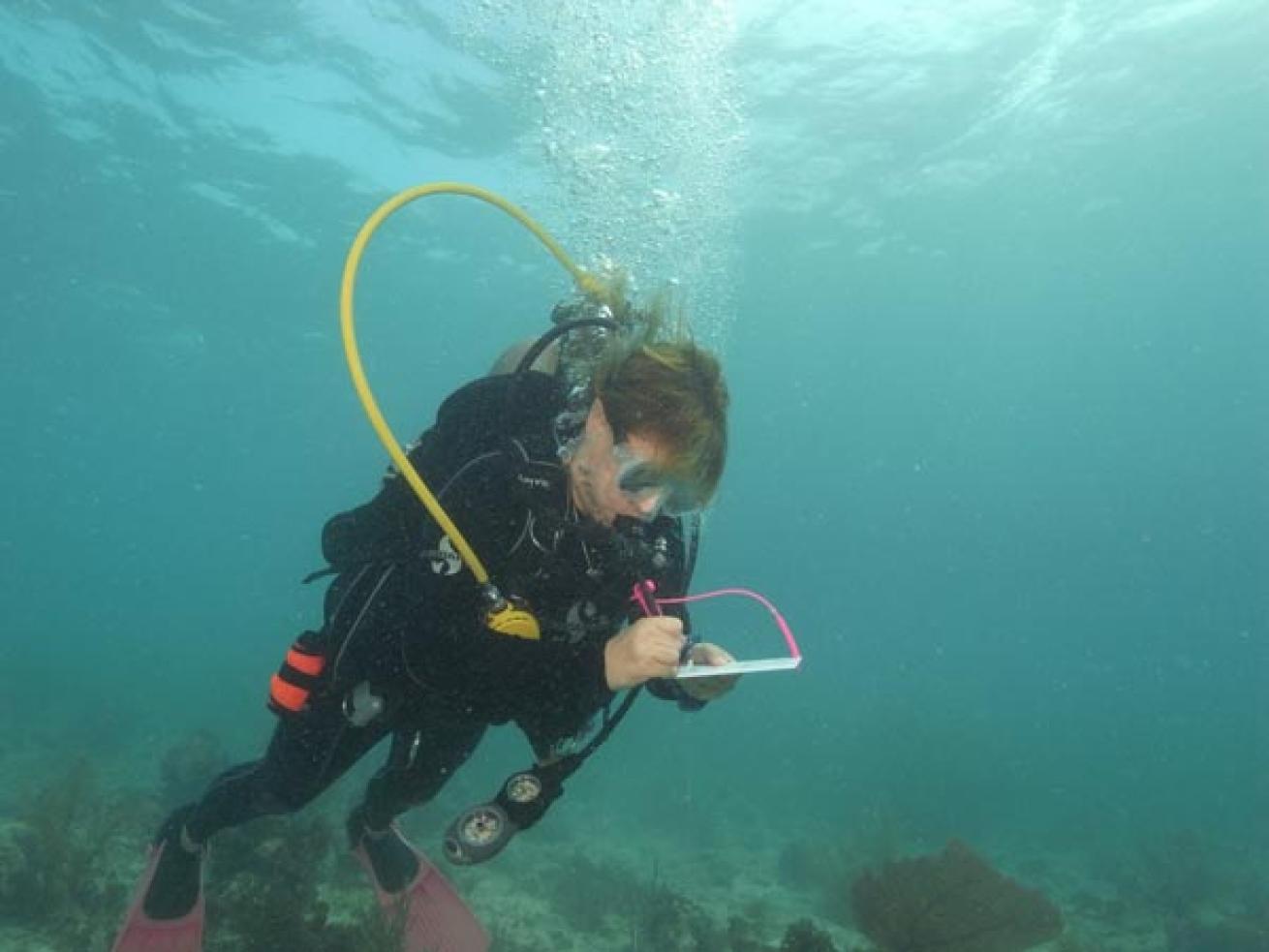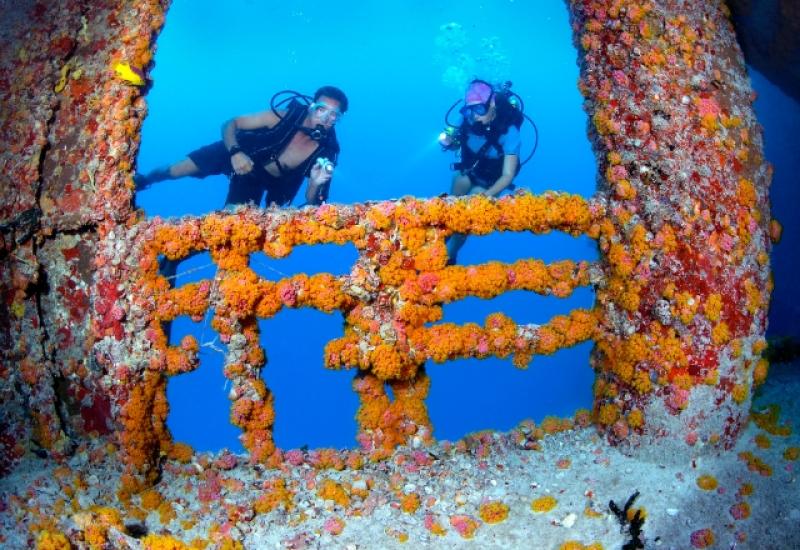ScubaLab Blog: Onboard Spree in Key West

Reg Testing in Key West
Ryan McClellan
**ScubaLab Blog: Reg Tests 2011
Blog entry #2**
To me, there’s no better feeling than waking up on a boat, lying in your bunk and feeling the vessel moving through the water. We’d arrived in Key West the night before and loaded the testing gear onto the luxury live-aboard Spree. Now we were on our way to the site of our first test dive, the famous Vandenberg wreck. After my pleasant awakening, I quickly headed topside for a strong cup of coffee and breakfast. I also wanted to greet Capt. Frank and make sure we were good to go for our first test_._
Frank acknowledged that the water was flat calm, but a fairly strong current seemed to be running. “It’s doable,” he said, “but I’m not sure what the viz will be like.” I was a bit disappointed, as this was my first time on the Vandy, and I was hoping for perfect conditions. But I reminded myself that we were testing regs for ScubaLab, not writing a travel piece.
Complicating Current
Frank’s prediction was confirmed when Melanie came back onboard from tying in a granny-line to the mooring ball. Unlike a typical charter dive boat, divers exiting the Spree cannot simply reach out from a giant stride and grasp a downline. And in the strong current we were experiencing this morning, we needed a line just to get us to the line.
The deeper we went, visibility failed to improve. I’d set a max depth of 100 feet to give us sufficient bottom time, but we spent most of the time around the_ Vandy’s_ stern area, running our ergonomic tests and not venturing too far from our mooring line. Half an hour later, we ascended and bid the Vandenberg farewell, hoping to return soon, when we could really enjoy it. Heading out, we motored to a shallower dive site, where we could put the regs through more earnest testing.
Hard Work
When I pitched the idea of being a part of ScubaLab testing to the team members, I talked about the cool factor — bragging rights, sampling the latest regulator technology, diving for free on a world-class live-aboard like the Spree, getting your name in print. However, I may have neglected to mention that it’s also hard work. Well, maybe “hard” is too strong a word, but this isn’t a lazy afternoon’s drift dive, either.
Actually, the test procedures are fairly basic: select your regulator, don gear, giant stride into the water, swim out to a sandy spot, put the reg through the testing protocols, record findings on slate, swim back to boat, climb back on board, transfer test findings from underwater slate to scoring data sheets, repeat. Repeat. Repeat. Repeat. You get the idea. While a single test by itself isn’t that strenuous, performing so many of them in a single day was definitely a chore.
We wrapped up the last round of regs around 6:00 that evening, making it a 10-hour dive day. Finishing the work on the Spree was pretty satisfying, but at this point, we were only half-way through the entire testing process. In a few days, we’d complete the second half of the tests in freshwater springs located in the little town of Williston, Florida.
Next time: Testing continues at Blue Grotto Springs
Click on the "Related Articles" link below to view the other installments of this blog.

Ryan McClellan
ScubaLab Blog: Reg Tests 2011 Blog entry #2
To me, there’s no better feeling than waking up on a boat, lying in your bunk and feeling the vessel moving through the water. We’d arrived in Key West the night before and loaded the testing gear onto the luxury live-aboard Spree. Now we were on our way to the site of our first test dive, the famous Vandenberg wreck. After my pleasant awakening, I quickly headed topside for a strong cup of coffee and breakfast. I also wanted to greet Capt. Frank and make sure we were good to go for our first test_._
Frank acknowledged that the water was flat calm, but a fairly strong current seemed to be running. “It’s doable,” he said, “but I’m not sure what the viz will be like.” I was a bit disappointed, as this was my first time on the Vandy, and I was hoping for perfect conditions. But I reminded myself that we were testing regs for ScubaLab, not writing a travel piece.
Complicating Current
Frank’s prediction was confirmed when Melanie came back onboard from tying in a granny-line to the mooring ball. Unlike a typical charter dive boat, divers exiting the Spree cannot simply reach out from a giant stride and grasp a downline. And in the strong current we were experiencing this morning, we needed a line just to get us to the line.
The deeper we went, visibility failed to improve. I’d set a max depth of 100 feet to give us sufficient bottom time, but we spent most of the time around the_ Vandy’s_ stern area, running our ergonomic tests and not venturing too far from our mooring line. Half an hour later, we ascended and bid the Vandenberg farewell, hoping to return soon, when we could really enjoy it. Heading out, we motored to a shallower dive site, where we could put the regs through more earnest testing.
Hard Work
When I pitched the idea of being a part of ScubaLab testing to the team members, I talked about the cool factor — bragging rights, sampling the latest regulator technology, diving for free on a world-class live-aboard like the Spree, getting your name in print. However, I may have neglected to mention that it’s also hard work. Well, maybe “hard” is too strong a word, but this isn’t a lazy afternoon’s drift dive, either.
Actually, the test procedures are fairly basic: select your regulator, don gear, giant stride into the water, swim out to a sandy spot, put the reg through the testing protocols, record findings on slate, swim back to boat, climb back on board, transfer test findings from underwater slate to scoring data sheets, repeat. Repeat. Repeat. Repeat. You get the idea. While a single test by itself isn’t that strenuous, performing so many of them in a single day was definitely a chore.
We wrapped up the last round of regs around 6:00 that evening, making it a 10-hour dive day. Finishing the work on the Spree was pretty satisfying, but at this point, we were only half-way through the entire testing process. In a few days, we’d complete the second half of the tests in freshwater springs located in the little town of Williston, Florida.
Next time: Testing continues at Blue Grotto Springs
Click on the "Related Articles" link below to view the other installments of this blog.










